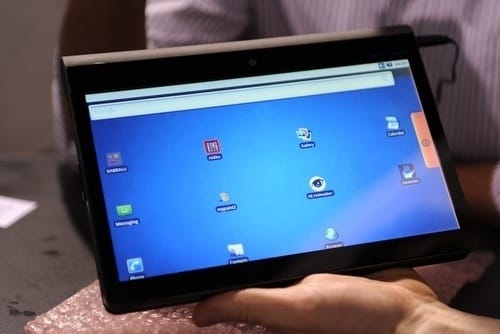When Android Honeycomb was released, there was a lot of speculation in the tablet market. Vendors, especially those shipping out Android tablets running Honeycomb, were very hopeful that this will help them make big. But apparently, there hopes are not very well-placed. According to stats gathered from multiple sources, Honeycomb tablets constitute a mere 1 to 2 percent of total Android tablets being used right now.
The statistics have been gathered from Chitika who recorded the ad impressions of tablet users and concluded that only 1 percent of total Android users use Honeycomb tablets. The statistics released by Google are not much different – according to Google, Honeycomb users constitute about 2.5 percent of the total tablet users. Gingerbread and Froyo, the earlier versions of Android OS, constitute for about 95 percent of total Android tablets, according to Google.
Why Honeycomb didn’t succeed?
According to analysts, Android has always placed a greater stress on the hardware and high specs rather than utilizing those specs to their fullest. For instance, Apple’s devices may not tool the best hardware in the market but Apple lets you do a lot of things with that limited hardware. Android tablets, on the other hand, comes with superior cameras, larger displays and lot more in terms of hardware but what is lacking is the ability to fully use this high-end hardware.
Also, Android is not a single, consolidated platform like Apple. A number of vendors are shipping Android tablets and each may or may not use the same Android OS. For instance, Google refused to release the source code of Honeycomb and so, other vendors couldn’t make use of it or modify it to use on their tablets.
These reasons may well be the main factors in the near-extinct success on Honeycomb tablets. Of course it may change if the Android vendors change their strategy but that remains to be seen.
Image courtesy quinn anya.
[ttjad keyword=”android-device”]




You’re totally missing the point on the reasons Honeycomb is on few devices: It costs a lot more time and money for Vendors to ready their own bloatware shells for a new version of Android, than to just keep releasing phones with one of the versions they already completed. This is not at all an issue of consumer choice or preference.
So, the pattern goes like this: usually, just the highest end phones have the newest OS installed from the start. At least a year passes till it starts to trickle down to lower end phones.
Even when upgrades become available, mainly the tech savvy will upgrade, many others figure they don’t want to loose their settings and are uncertain if they would loose data or not. So even with updates available, its not that consumers chose they’d rather run on the older system, because of some impression that the old version is better than the newer one. They just do not wish to disturb the way they got everything set up.
In this regard, you cannot forget that many people are using smart phones phones the same as if they were feature phones and apart from availability of apps they lack the understanding of what exactly the differences are.
From the Article:
“…(Android phones have)…superior cameras, larger displays and lot more in terms of hardware but what is lacking is the ability to fully use this high-end hardware.”
Another Apple shill? I have no reduction of “full usage of my hardware” since I switched from iPhone to Android. Matter of fact, I didn’t switch for the better hardware, but to eliminate all the restrictions I had on my Apple device. Apple stuff isn’t good for power users, cause well… you know, Jobs told the architects of his new donut building that the windows shouldn’t open, “cause its just another opportunity for people to screw things up” I guess he was thinking about Foxconn. But you get the idea behind his philosophy for everything…